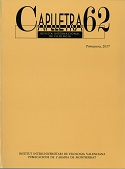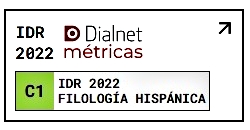The verb «semblar» in Old Catalan
DOI:
https://doi.org/10.7203/caplletra.62.9568Keywords:
Old Catalan, Gallo-Romance languages, Iberian Romance languages, verb parèixer, verb semblar Abstract
Abstract
Abstract: In current Catalan, the verbs semblar and parèixer are two verbs mostly synonyms distributed territorially in a unequal way: While verb parèixer persists in the Valencian Country, in the Balearic Islands and in the northwestern Catalan, the verb semblar coexists with parèixer. Moreover, it has become hegemonic in the centre north of the linguistic domain. However, this distribution is not the one we find in the ancient language, where semblar is a verb relatively uncommon if we compare it with parèixer. In addition, most of the examples for this verb are confirmed in a very small group of works (especially those from the 13th and 15th century). This paper tries to describe the syntactic uses and meanings of verb semblar in ancient Catalan and it also tries to explain the relation that has with parèixer. In outline, we conclude with the fact that the difference founded between both verbs is semantic and the fact that the convergence showed in specific works can be explained as an influence of the Occitan language, as a calque in translations or as a dialectal feature. The study is based in the data obtained from the Corpus Informatitzat de la Gramàtica del Català Antic (CIGCA).
Key words: Old Catalan, Gallo-Romance languages, Iberian Romance languages, verb parèixer, verb sembla Downloads
Downloads
Downloads
Published
How to Cite
-
Abstract982
-
PDF (Català)600
Issue
Section
License
Authors submitting work to Caplletra for publication must be the legitimate holder of the usage rights. Legitimacy for the purposes of publishing the work must also include images, tables, diagrams and any other materials that may complement the text, whether they are the author of such material or not.
Copyright: on publishing their work in the journal, the author grants Caplletra. Revista Internacional de Filologia usage rights (reproduction, distribution and public communication) for both the paper printed version and for the electronic version.
All work published in Caplletra is covered by the Creative Commons license type Attribution-NonCommercial-NoDerivatives 4.0 (CC BY-NC-ND 4.0).
RESPONSABILITY
Caplletra. Revista Internacional de Filologia does not necessarily identify with the points of view expressed in the papers it publishes.
Caplletra. Revista Internacional de Filologia accepts no responsibility whatsoever for any eventual infringement of intellectual property rights on the part of authors.






